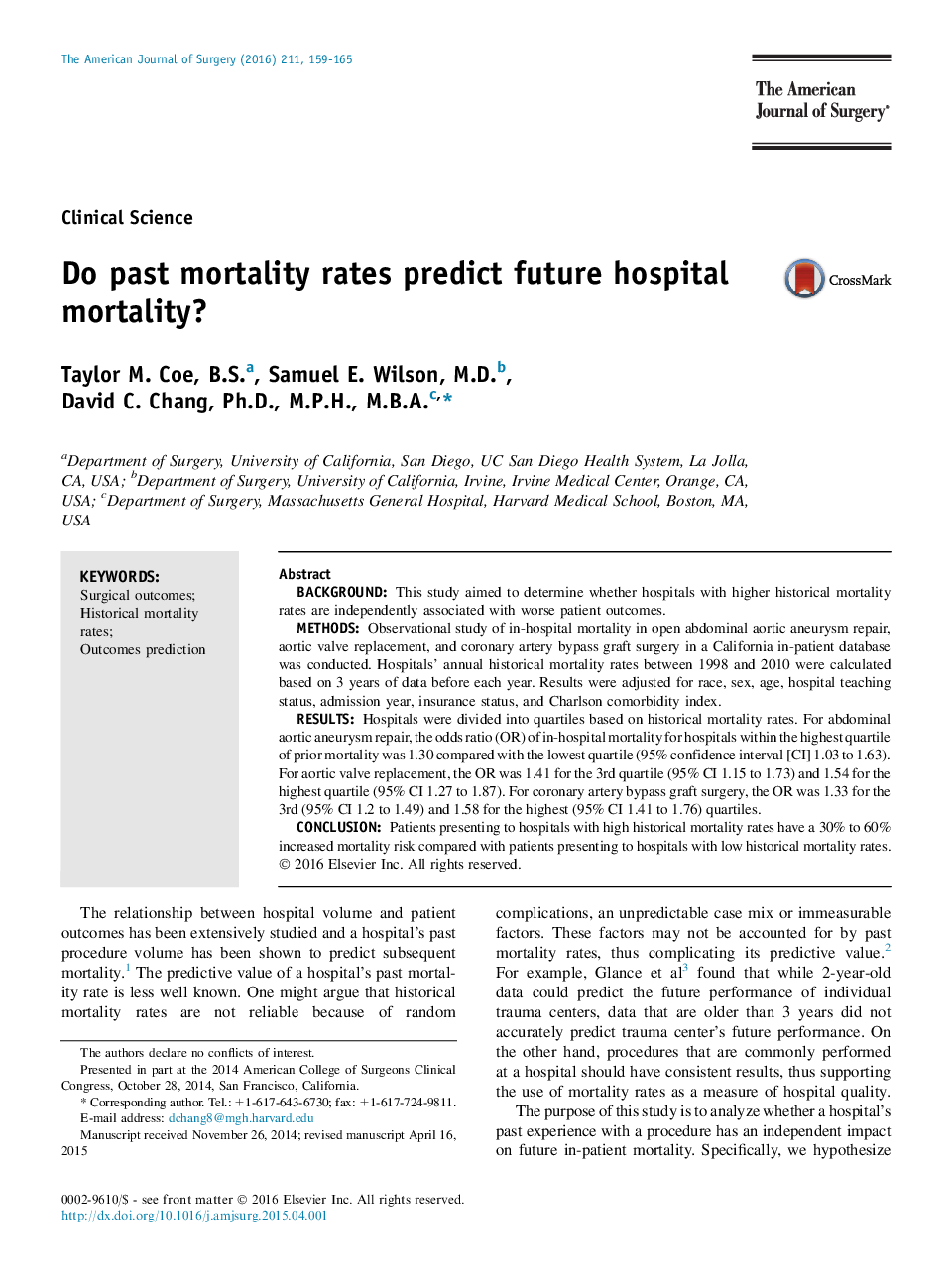| Article ID | Journal | Published Year | Pages | File Type |
|---|---|---|---|---|
| 6250468 | The American Journal of Surgery | 2016 | 7 Pages |
â¢Observational study of in-hospital mortality in open AAA repair, AVR, and CABG.â¢Past mortality rate is an independent predictor of patient outcomes in 3 procedures.â¢A total of 30% to 60% increased mortality risk at hospitals with a high past mortality rate.
BackgroundThis study aimed to determine whether hospitals with higher historical mortality rates are independently associated with worse patient outcomes.MethodsObservational study of in-hospital mortality in open abdominal aortic aneurysm repair, aortic valve replacement, and coronary artery bypass graft surgery in a California in-patient database was conducted. Hospitals' annual historical mortality rates between 1998 and 2010 were calculated based on 3 years of data before each year. Results were adjusted for race, sex, age, hospital teaching status, admission year, insurance status, and Charlson comorbidity index.ResultsHospitals were divided into quartiles based on historical mortality rates. For abdominal aortic aneurysm repair, the odds ratio (OR) of in-hospital mortality for hospitals within the highest quartile of prior mortality was 1.30 compared with the lowest quartile (95% confidence interval [CI] 1.03 to 1.63). For aortic valve replacement, the OR was 1.41 for the 3rd quartile (95% CI 1.15 to 1.73) and 1.54 for the highest quartile (95% CI 1.27 to 1.87). For coronary artery bypass graft surgery, the OR was 1.33 for the 3rd (95% CI 1.2 to 1.49) and 1.58 for the highest (95% CI 1.41 to 1.76) quartiles.ConclusionPatients presenting to hospitals with high historical mortality rates have a 30% to 60% increased mortality risk compared with patients presenting to hospitals with low historical mortality rates.
